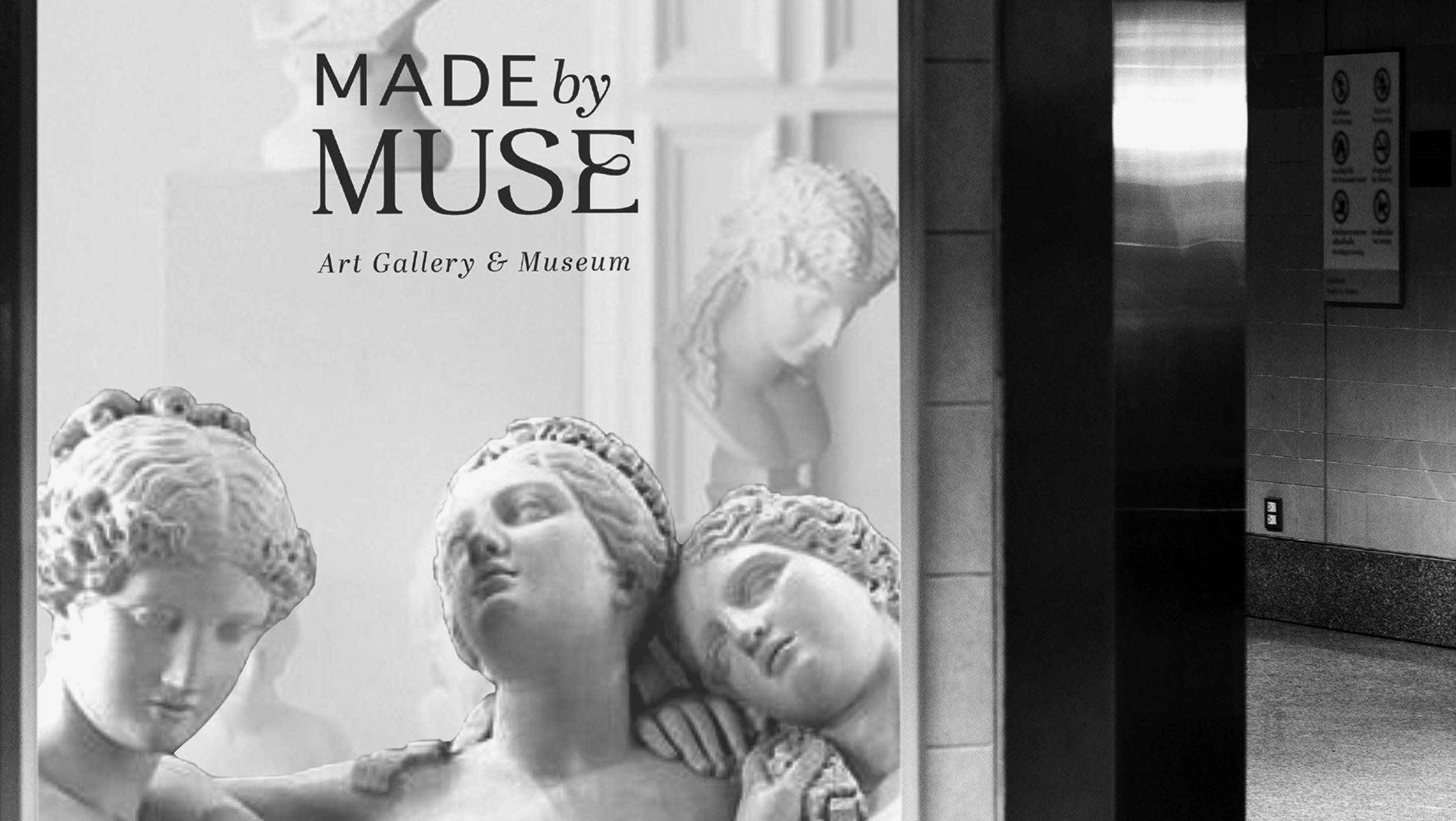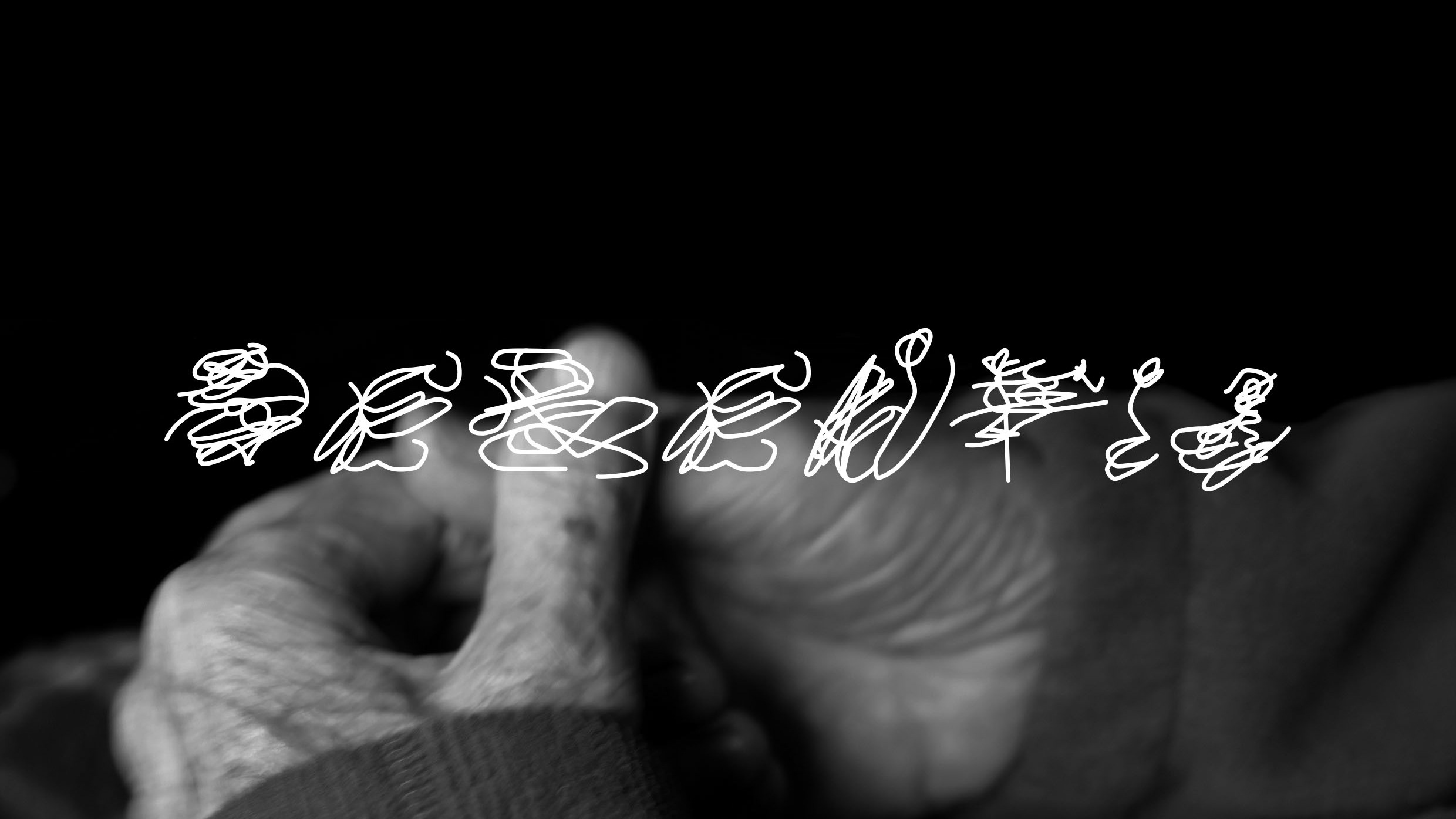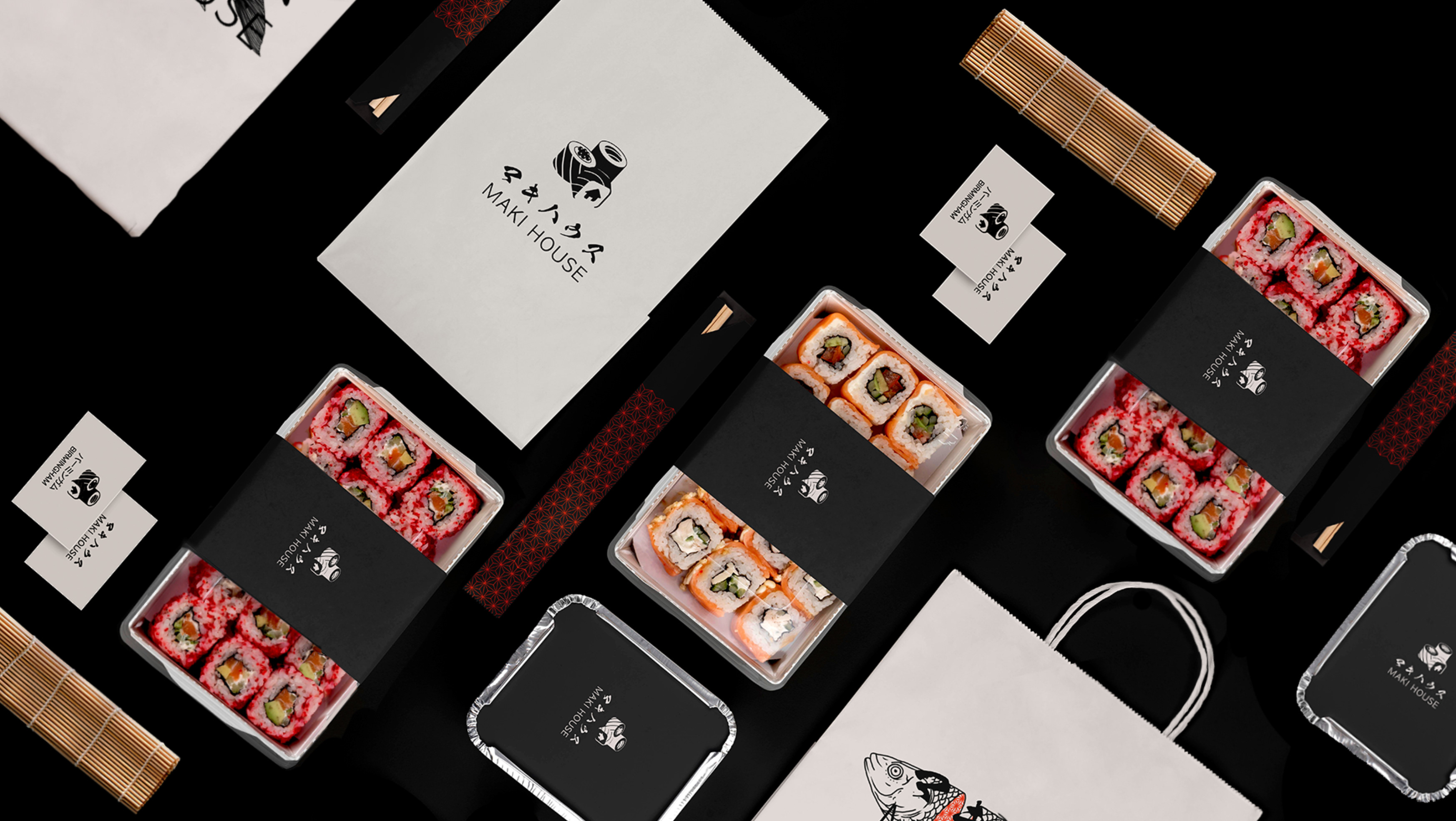Software used: Illustrator, Photoshop, Lightroom, Wacom Cintiq 13HD, Canon 550D
ᜊᜌ᜔ᜊᜌᜒᜈ᜔
Baybayin - means "to write" or "to spell."
This book is an exploration into lost Filipino writing systems and beliefs. I made this originally as part of my degree project as a way to explore my heritage and Filipino history, most of which was destroyed by Spanish colonisers.
It’s only by retracing our past that we are able to connect with our ancestors.
Sa pamamagitan ng pagbabalik tanaw natin sa mga nakaraan mauugnay natin ang ating mga ninuno.
ᜐ ᜉᜋᜋᜄᜒᜆᜈ᜔ ᜅ᜔ ᜉᜄ᜔ᜊᜊᜎᜒᜃ᜔ ᜆᜈᜏ᜔ ᜈᜆᜒᜈ᜔ ᜐ ᜋ᜔ᜄ᜶
(All images were taken in Cebu, Philippines 2017
with a Canon EOS 550D)
Baybayin - means "to write" or "to spell."
This book is an exploration into lost Filipino writing systems and beliefs. I made this originally as part of my degree project as a way to explore my heritage and Filipino history, most of which was destroyed by Spanish colonisers.
It’s only by retracing our past that we are able to connect with our ancestors.
Sa pamamagitan ng pagbabalik tanaw natin sa mga nakaraan mauugnay natin ang ating mga ninuno.
ᜐ ᜉᜋᜋᜄᜒᜆᜈ᜔ ᜅ᜔ ᜉᜄ᜔ᜊᜊᜎᜒᜃ᜔ ᜆᜈᜏ᜔ ᜈᜆᜒᜈ᜔ ᜐ ᜋ᜔ᜄ᜶
(All images were taken in Cebu, Philippines 2017
with a Canon EOS 550D)
Pre-Spanish Era
Bago Panahon ng Espanyol.
Bago Panahon ng Espanyol.
The Pre Spanish era consisted of many tribes and villages which traded and fought. Despite this, life was generally peaceful and focused on agriculture - with little attention being given to things like constructing structures such as churches, temples or places of self-gratification.
Women had high importance in society and had equal if not more power than those of men. Being able to be healers, leaders and warriors, as well as the right to own property and divorce. Around the Visayan isles, we were known as 'Los Pintados' or "the painted ones" by the Spanish, due to our heavily tattooed bodies.
ᜀᜅ᜔ ᜊᜓᜑᜌ᜔ ᜀᜌ᜔ ᜃᜍᜈᜒᜏᜅ᜔ ᜋᜉᜌᜉ ᜀᜌ᜔ ᜊᜒᜈᜓᜊᜓᜂ ᜅ᜔ ᜋᜍᜋᜒᜅ᜔ ᜎᜒᜉᜒ ᜀᜆ᜔ ᜈᜃᜒᜃᜒᜉᜄ᜔ᜎᜊᜈ᜔᜶ ᜐ ᜃᜊᜒᜎ ᜅ᜔ ᜋ᜔ᜄ ᜁᜆᜓ᜵ ᜀᜅ᜔ ᜊᜓᜑᜌ᜔ ᜀᜆ᜔ ᜃᜍᜈᜒᜏᜅ᜔ ᜋᜉᜌᜉ ᜀᜆ᜔ ᜈᜃᜆᜓᜆᜓᜃ᜔ ᜅ᜔ ᜀᜄ᜔ᜍᜒᜃᜓᜎ᜔ᜆᜓᜍ ᜈ ᜋᜌ᜔ ᜁᜊᜒᜈᜒᜊᜒᜄᜌ᜔ ᜈ ᜃᜂᜈ᜔ᜆᜒᜅ᜔ ᜉᜈ᜔ᜐᜒᜈ᜔ ᜐ ᜋ᜔ᜄ ᜐᜒᜋ᜔ᜊᜑᜈ᜔᜵ ᜆᜒᜋ᜔ᜉ᜔ᜎᜓ ᜂ ᜎᜓᜄᜍ᜔ ᜅ᜔ ᜉᜈ᜔ᜐᜍᜒᜎᜒᜅ᜔ ᜃᜐᜒᜌᜑᜈ᜔᜶ ᜀᜅ᜔ ᜋ᜔ᜄ ᜃᜊᜊᜁᜑᜈ᜔ ᜀᜌ᜔ ᜊᜒᜈᜒᜄ᜔ᜌᜈ᜔ ᜅ᜔ ᜋᜆᜀᜐ᜔ ᜈ ᜃᜑᜎᜄᜑᜈ᜔ ᜐ ᜎᜒᜉᜓᜈᜈ᜔ ᜀᜆ᜔ ᜋᜌ᜔ ᜉᜈ᜔ᜆᜌ᜔ ᜃᜓᜅ᜔ ᜑᜒᜈ᜔ᜇᜒ ᜋᜆᜀᜐ᜔ ᜂ ᜋᜍᜋᜒᜅ᜔ ᜃᜉᜅ᜔ᜌᜍᜒᜑᜈ᜔ ᜃᜌ᜔ᜐ ᜋ᜔ᜄ ᜃᜎᜎᜃᜒᜑᜈ᜔᜶ ᜋᜌ᜔ ᜃᜃᜌᜑᜅ᜔ ᜋᜄᜒᜅ᜔ ᜋᜅ᜔ᜄᜋᜓᜆ᜔᜵ ᜉᜒᜈᜓᜈᜓ᜵ ᜀᜆ᜔ ᜋᜈ᜔ᜇᜒᜍᜒᜄ᜔ᜋ᜵ ᜀᜆ᜔ ᜋᜄᜒᜅ᜔ ᜐ ᜃᜍᜉᜆᜈ᜔ ᜈ ᜋᜄ᜔ᜃᜍᜓᜂᜈ᜔ ᜅ᜔ ᜐᜍᜒᜎᜒᜅ᜔ ᜀᜍᜒᜀᜍᜒᜀᜈ᜔ ᜀᜆ᜔ ᜇᜒᜊᜓᜍ᜔ᜐ᜔ᜌᜓ᜶
ᜐ ᜉᜎᜒᜄᜒᜇ᜔ ᜅ᜔ ᜃᜉᜓᜎᜓᜀᜈ᜔ ᜅ᜔ VIᜐᜌᜐ᜔ ᜃᜋᜒ ᜀᜌ᜔ ᜆᜒᜈᜆᜏᜄ᜔ ᜈ ''ᜎᜓᜐ᜔ ᜉᜒᜈ᜔ᜆᜇᜓᜐ᜔'' ᜂ '' ᜆ᜔ᜑᜒ ᜉᜁᜈ᜔ᜆᜒᜇ᜔ ᜂᜈᜒᜐ᜔'' ᜅ᜔ ᜋ᜔ᜄ ᜁᜐ᜔ᜉᜈ᜔ᜌᜓᜎ᜔ ᜇᜑᜒᜎ᜔ ᜐ ᜀᜋᜒᜅ᜔ ᜋᜊᜒᜄᜆ᜔ ᜈ ᜉᜒᜈ᜔ᜆ ᜐ ᜃᜆᜏᜈ᜔᜶
Beliefs
Paniniwala.
Paniniwala.
We lost our beliefs, alongside our cultural identities and writing systems.
Before the introduction of modern pharmaceuticals, sickness was always associated with paranormal causes, often said to be inflicted by either the loss of one's soul to the spiritual world, spirits of the deceased, or nature spirits, gods, and evil spirits that accidentally or intentionally inflict pain, curses, and injuries to mortal men.
Before the introduction of modern pharmaceuticals, sickness was always associated with paranormal causes, often said to be inflicted by either the loss of one's soul to the spiritual world, spirits of the deceased, or nature spirits, gods, and evil spirits that accidentally or intentionally inflict pain, curses, and injuries to mortal men.
ᜈᜏᜏᜎ ᜆᜌᜓ ᜐ ᜀᜆᜒᜅ᜔ ᜉᜈᜒᜈᜒᜏᜎ ᜀᜆ᜔ ᜃᜒᜈᜎᜃᜒᜑᜅ᜔ ᜃᜓᜎ᜔ᜆᜓᜍ ᜀᜆ᜔ ᜐᜒᜐ᜔ᜆᜒᜋ ᜅ᜔ ᜉᜄ᜔ᜐᜓᜐᜓᜎᜆ᜔᜶
ᜊᜄᜓ ᜀᜅ᜔ ᜉᜄ᜔ᜉᜉᜃᜒᜎᜎ ᜅ᜔ ᜋᜓᜇᜒᜍ᜔ᜈᜓᜅ᜔ ᜋ᜔ᜄ ᜄᜋᜓᜆ᜔᜵ ᜀᜅ᜔ ᜁᜊ’T ᜁᜊᜅ᜔ ᜐᜃᜒᜆ᜔ ᜀᜌ᜔ ᜉᜎᜄᜒᜅ᜔ ᜈᜂᜂᜄ᜔ᜈᜌ᜔ ᜅ᜔ “Pᜀᜍᜈᜓᜍ᜔ᜋᜎ᜔” ᜈ ᜇᜑ᜔ᜎ᜔ᜎᜈ᜔ ᜈ ᜋᜇᜎᜐ᜔ ᜐᜒᜈᜐᜊᜒᜅ᜔ ᜉᜑᜒᜍᜉᜈ᜔ ᜀᜐ᜔ ᜉᜋᜋᜄᜒᜆᜈ᜔ ᜅ᜔ ᜂ ᜐ ᜉᜄ᜔ᜃᜏᜎ ᜅ᜔ ᜉᜒᜐᜅ᜔ ᜃᜎᜓᜎᜓᜏ ᜆᜓᜅᜓ ᜐ ᜋᜐᜒᜄ᜔ᜎᜅ᜔ ᜋᜓᜈ᜔ᜇᜓ᜵ ᜁᜐ᜔ᜉᜒᜍᜒᜆᜓ ᜅ᜔ ᜋ᜔ᜄ ᜉᜓᜋᜈᜏ᜔ ᜂ ᜁᜐ᜔ᜉᜒᜍᜒᜆᜓ ᜅ᜔ ᜃᜎᜒᜃᜐᜈ᜔᜵ ᜁᜐ᜔ᜉᜒᜍᜒᜆᜓ ᜅ᜔ ᜇᜒᜌᜓᜐ᜔ ᜀᜆ᜔ ᜁᜐ᜔ᜉᜒᜍᜒᜆᜓ ᜅ᜔ ᜃᜐᜋᜀᜈ᜔ ᜐ ᜐᜒᜈᜐᜇ᜔ᜌ ᜂ ᜑᜒᜈ᜔ᜇᜒ ᜐᜒᜈᜐᜇ᜔ᜌᜅ᜔ ᜈᜄ᜔ᜇᜓᜇᜓᜎᜓᜆ᜔ ᜅ᜔ ᜐᜃᜒᜆ᜔᜵ ᜐᜓᜋ᜔ᜉ᜵ ᜀᜆ᜔ ᜉᜒᜈ᜔ᜐᜎ ᜐ ᜋ᜔ᜄ ᜋᜓᜍ᜔ᜆᜎ᜔ ᜈ ᜆᜂ᜶
ᜊᜄᜓ ᜀᜅ᜔ ᜉᜄ᜔ᜉᜉᜃᜒᜎᜎ ᜅ᜔ ᜋᜓᜇᜒᜍ᜔ᜈᜓᜅ᜔ ᜋ᜔ᜄ ᜄᜋᜓᜆ᜔᜵ ᜀᜅ᜔ ᜁᜊ’T ᜁᜊᜅ᜔ ᜐᜃᜒᜆ᜔ ᜀᜌ᜔ ᜉᜎᜄᜒᜅ᜔ ᜈᜂᜂᜄ᜔ᜈᜌ᜔ ᜅ᜔ “Pᜀᜍᜈᜓᜍ᜔ᜋᜎ᜔” ᜈ ᜇᜑ᜔ᜎ᜔ᜎᜈ᜔ ᜈ ᜋᜇᜎᜐ᜔ ᜐᜒᜈᜐᜊᜒᜅ᜔ ᜉᜑᜒᜍᜉᜈ᜔ ᜀᜐ᜔ ᜉᜋᜋᜄᜒᜆᜈ᜔ ᜅ᜔ ᜂ ᜐ ᜉᜄ᜔ᜃᜏᜎ ᜅ᜔ ᜉᜒᜐᜅ᜔ ᜃᜎᜓᜎᜓᜏ ᜆᜓᜅᜓ ᜐ ᜋᜐᜒᜄ᜔ᜎᜅ᜔ ᜋᜓᜈ᜔ᜇᜓ᜵ ᜁᜐ᜔ᜉᜒᜍᜒᜆᜓ ᜅ᜔ ᜋ᜔ᜄ ᜉᜓᜋᜈᜏ᜔ ᜂ ᜁᜐ᜔ᜉᜒᜍᜒᜆᜓ ᜅ᜔ ᜃᜎᜒᜃᜐᜈ᜔᜵ ᜁᜐ᜔ᜉᜒᜍᜒᜆᜓ ᜅ᜔ ᜇᜒᜌᜓᜐ᜔ ᜀᜆ᜔ ᜁᜐ᜔ᜉᜒᜍᜒᜆᜓ ᜅ᜔ ᜃᜐᜋᜀᜈ᜔ ᜐ ᜐᜒᜈᜐᜇ᜔ᜌ ᜂ ᜑᜒᜈ᜔ᜇᜒ ᜐᜒᜈᜐᜇ᜔ᜌᜅ᜔ ᜈᜄ᜔ᜇᜓᜇᜓᜎᜓᜆ᜔ ᜅ᜔ ᜐᜃᜒᜆ᜔᜵ ᜐᜓᜋ᜔ᜉ᜵ ᜀᜆ᜔ ᜉᜒᜈ᜔ᜐᜎ ᜐ ᜋ᜔ᜄ ᜋᜓᜍ᜔ᜆᜎ᜔ ᜈ ᜆᜂ᜶
Spanish Era
Noong Panahon ng Espanyol
Noong Panahon ng Espanyol
The Philippines had multiple writing styles, which were partially influenced regionally and culturally by foreign interactions through trade. Notable influences stemming from Persia, India, and other Asian/Austronesian countries.
In the 16th century (1521) Spanish missionaries settled and the Philippines became a Spanish colony lasting 333 years, naming it in honour of King Philip II. Over time, the Spanish heavily indoctrinated Catholicism and condemned local beliefs of animism and shamanism claiming it to be witchcraft.
They also introduced the Latin alphabet, educating the population with the encouragement that their systems were better. The missionaries and priests destroyed ancient scrolls and historical documents, few of which are still in existence today, but with time one hopes to revive that which has been forgotten.
ᜀᜅ᜔ ᜉᜒᜎᜒᜉᜒᜈᜐ᜔ ᜀᜌ᜔ ᜋᜌ᜔ ᜋᜍᜋᜒᜅ᜔ ᜁᜐ᜔ᜆᜒᜎᜓ ᜐ ᜉᜄ᜔ᜐᜓᜎᜆ᜔ ᜈ ᜊᜑᜄ᜔ᜌᜅ᜔ ᜈᜁᜁᜋ᜔ᜉ᜔ᜎᜓᜏᜒᜈ᜔ᜐᜒᜌᜑᜈ᜔ ᜅ᜔ ᜁᜊ'T ᜁᜊᜅ᜔ ᜍᜒᜑᜒᜌᜓᜈ᜔ ᜀᜆ᜔ ᜃᜓᜎ᜔ᜆᜓᜍ ᜅ᜔ ᜋ᜔ᜄ ᜊᜈ᜔ᜌᜄ ᜐ ᜉᜋᜋᜄᜒᜆᜈ᜔ ᜅ᜔ ᜃᜎᜃᜎᜈ᜔᜶ ᜀᜅ᜔ ᜋ᜔ᜄ ᜋᜑᜎᜄᜅ᜔ ᜁᜋ᜔ᜉ᜔ᜎᜓᜏᜒᜈ᜔ᜐᜒᜌ ᜀᜌ᜔ ᜐᜓᜋᜎᜓᜅ ᜋᜓᜎ ᜐ ᜉᜒᜍ᜔ᜐᜒᜀ᜵ ᜁᜈ᜔ᜇᜒᜀ᜵ ᜀᜆ᜔ ᜁᜊ'T ᜁᜊᜅ᜔ ᜉᜈᜒᜄ᜔ ᜅ᜔ ᜊᜈ᜔ᜐ᜶
ᜐ ᜁᜃ ᜎᜊᜒᜅ᜔ ᜀᜈᜒᜋ᜔ ᜈ ᜐᜒᜄ᜔ᜎᜓ ᜈᜋᜎᜄᜒ ᜀᜅ᜔ ᜋ᜔ᜄ ᜁᜐ᜔ᜉᜈ᜔ᜌᜓᜎ᜔ ᜐ ᜉᜒᜎᜒᜉᜒᜈᜐ᜔ ᜀᜆ᜔ ᜐᜒᜈᜃᜓᜉ᜔ ᜈᜒᜎ ᜁᜆᜓ ᜑᜅ᜔ᜄᜅ᜔ ᜆᜆ᜔ᜎᜓᜅ᜔ ᜇᜀᜈ᜔ ᜆᜆ᜔ᜎᜓᜋ᜔ᜉᜓ'T ᜆᜆ᜔ᜎᜓᜅ᜔ ᜆᜂᜈ᜔᜵ ᜐ ᜉᜄ᜔ᜉᜉᜅᜎᜈ᜔ ᜉᜍ ᜐ ᜃᜍᜅᜎᜈ᜔ ᜈᜒ ᜃᜒᜅ᜔ ᜉ᜔ᜑᜒᜎ᜔ᜎᜒᜉ᜔ ᜁᜁ᜶ ᜋᜓᜎ ᜈᜓᜂᜈ᜔᜵ ᜉᜒᜎᜒᜆ᜔ ᜈ ᜁᜉᜒᜈᜄ᜔ᜃᜎᜓᜂᜊ᜔ ᜅ᜔ ᜋ᜔ᜄ ᜁᜐ᜔ᜉᜈ᜔ᜌᜓᜎ᜔ ᜀᜅ᜔ ᜍᜒᜎᜒᜑᜒᜌᜓᜅ᜔ ᜍᜓᜋᜈ᜔ Cᜆ᜔ᜑᜓᜎᜒC᜔ ᜀᜆ᜔ ᜁᜉᜈᜄ᜔ᜊᜏᜎ᜔ ᜂ ᜁᜉᜒᜈᜄ᜔ᜏᜎᜅ᜔ ᜊᜑᜎ ᜀᜅ᜔ ᜎᜓᜃᜎ᜔ ᜈ ᜉᜈᜒᜈᜒᜏᜎᜅ᜔ ᜀᜈᜒᜋᜒᜐ᜔ᜋᜓ ᜀᜆ᜔ ᜐ᜔ᜑᜋᜈᜒᜐ᜔ᜋᜓ ᜈ ᜐᜒᜈᜐᜊᜒᜅ᜔ ᜄᜏᜁᜈ᜔ ᜅ᜔ ᜋᜅ᜔ᜃᜓᜃᜓᜎᜋ᜔᜶
ᜁᜉᜒᜈᜃᜒᜎᜎ ᜇᜒᜈ᜔ ᜈᜒᜎ ᜀᜅ᜔ ᜀᜎ᜔ᜉᜊᜒᜆᜓᜅ᜔ ᜎᜆᜒᜈᜓ᜵ ᜈᜄ᜔ᜆᜓᜆᜓᜍᜓ ᜅ᜔ ᜉᜓᜉᜓᜎᜐ᜔ᜌᜓᜈ᜔ ᜈ ᜋᜌ᜔ ᜎᜃᜐ᜔ ᜎᜓᜂᜊ᜔ ᜀᜆ᜔ ᜉᜄ᜔ᜀᜐ ᜈ ᜀᜅ᜔ ᜃᜈᜒᜎᜅ᜔ ᜐᜒᜐ᜔ᜆᜒᜋ ᜀᜌ᜔ ᜋᜊᜓᜆᜒ᜶ ᜀᜅ᜔ ᜋ᜔ᜄ ᜋᜒᜐ᜔ᜌᜓᜈᜍ᜔ᜌᜓ ᜀᜆ᜔ ᜃᜉᜍᜒᜀᜈ᜔ ᜈᜋᜈ᜔ ᜀᜌ᜔ ᜏᜒᜈᜐᜃ᜔ ᜀᜅ᜔ ᜐᜒᜈᜂᜈᜅ᜔ ᜊᜎᜓᜋ᜔ᜊᜓᜈ᜔ ᜀᜆ᜔ ᜋᜃᜐᜌ᜔ᜐᜌᜅ᜔ ᜇᜓᜃᜓᜋᜒᜈ᜔ᜆᜓ᜶ ᜁᜎᜈ᜔ ᜐ ᜋ᜔ᜄ ᜁᜆᜓ ᜀᜌ᜔ ᜋᜃᜒᜃᜒᜆ ᜂ ᜄᜒᜈᜄᜋᜒᜆ᜔ ᜑᜅ᜔ᜄᜅ᜔ ᜅᜌᜓᜈ᜔᜵ ᜊᜄᜋ'T ᜋᜌ᜔ ᜁᜐ ᜈ ᜑᜒᜈ᜔ᜇᜒ ᜈᜏᜎᜈ᜔ ᜅ᜔ ᜉᜄ᜔ᜀᜐ ᜈ ᜋᜓᜎᜒᜅ᜔ ᜊᜓᜑᜌᜒᜈ᜔ ᜂ ᜐᜍᜒᜏᜁᜈ᜔ ᜀᜅ᜔ ᜀᜈᜓᜋᜅ᜔ ᜈᜃᜎᜒᜋᜓᜆᜈ᜔᜶
ᜐ ᜁᜃ ᜎᜊᜒᜅ᜔ ᜀᜈᜒᜋ᜔ ᜈ ᜐᜒᜄ᜔ᜎᜓ ᜈᜋᜎᜄᜒ ᜀᜅ᜔ ᜋ᜔ᜄ ᜁᜐ᜔ᜉᜈ᜔ᜌᜓᜎ᜔ ᜐ ᜉᜒᜎᜒᜉᜒᜈᜐ᜔ ᜀᜆ᜔ ᜐᜒᜈᜃᜓᜉ᜔ ᜈᜒᜎ ᜁᜆᜓ ᜑᜅ᜔ᜄᜅ᜔ ᜆᜆ᜔ᜎᜓᜅ᜔ ᜇᜀᜈ᜔ ᜆᜆ᜔ᜎᜓᜋ᜔ᜉᜓ'T ᜆᜆ᜔ᜎᜓᜅ᜔ ᜆᜂᜈ᜔᜵ ᜐ ᜉᜄ᜔ᜉᜉᜅᜎᜈ᜔ ᜉᜍ ᜐ ᜃᜍᜅᜎᜈ᜔ ᜈᜒ ᜃᜒᜅ᜔ ᜉ᜔ᜑᜒᜎ᜔ᜎᜒᜉ᜔ ᜁᜁ᜶ ᜋᜓᜎ ᜈᜓᜂᜈ᜔᜵ ᜉᜒᜎᜒᜆ᜔ ᜈ ᜁᜉᜒᜈᜄ᜔ᜃᜎᜓᜂᜊ᜔ ᜅ᜔ ᜋ᜔ᜄ ᜁᜐ᜔ᜉᜈ᜔ᜌᜓᜎ᜔ ᜀᜅ᜔ ᜍᜒᜎᜒᜑᜒᜌᜓᜅ᜔ ᜍᜓᜋᜈ᜔ Cᜆ᜔ᜑᜓᜎᜒC᜔ ᜀᜆ᜔ ᜁᜉᜈᜄ᜔ᜊᜏᜎ᜔ ᜂ ᜁᜉᜒᜈᜄ᜔ᜏᜎᜅ᜔ ᜊᜑᜎ ᜀᜅ᜔ ᜎᜓᜃᜎ᜔ ᜈ ᜉᜈᜒᜈᜒᜏᜎᜅ᜔ ᜀᜈᜒᜋᜒᜐ᜔ᜋᜓ ᜀᜆ᜔ ᜐ᜔ᜑᜋᜈᜒᜐ᜔ᜋᜓ ᜈ ᜐᜒᜈᜐᜊᜒᜅ᜔ ᜄᜏᜁᜈ᜔ ᜅ᜔ ᜋᜅ᜔ᜃᜓᜃᜓᜎᜋ᜔᜶
ᜁᜉᜒᜈᜃᜒᜎᜎ ᜇᜒᜈ᜔ ᜈᜒᜎ ᜀᜅ᜔ ᜀᜎ᜔ᜉᜊᜒᜆᜓᜅ᜔ ᜎᜆᜒᜈᜓ᜵ ᜈᜄ᜔ᜆᜓᜆᜓᜍᜓ ᜅ᜔ ᜉᜓᜉᜓᜎᜐ᜔ᜌᜓᜈ᜔ ᜈ ᜋᜌ᜔ ᜎᜃᜐ᜔ ᜎᜓᜂᜊ᜔ ᜀᜆ᜔ ᜉᜄ᜔ᜀᜐ ᜈ ᜀᜅ᜔ ᜃᜈᜒᜎᜅ᜔ ᜐᜒᜐ᜔ᜆᜒᜋ ᜀᜌ᜔ ᜋᜊᜓᜆᜒ᜶ ᜀᜅ᜔ ᜋ᜔ᜄ ᜋᜒᜐ᜔ᜌᜓᜈᜍ᜔ᜌᜓ ᜀᜆ᜔ ᜃᜉᜍᜒᜀᜈ᜔ ᜈᜋᜈ᜔ ᜀᜌ᜔ ᜏᜒᜈᜐᜃ᜔ ᜀᜅ᜔ ᜐᜒᜈᜂᜈᜅ᜔ ᜊᜎᜓᜋ᜔ᜊᜓᜈ᜔ ᜀᜆ᜔ ᜋᜃᜐᜌ᜔ᜐᜌᜅ᜔ ᜇᜓᜃᜓᜋᜒᜈ᜔ᜆᜓ᜶ ᜁᜎᜈ᜔ ᜐ ᜋ᜔ᜄ ᜁᜆᜓ ᜀᜌ᜔ ᜋᜃᜒᜃᜒᜆ ᜂ ᜄᜒᜈᜄᜋᜒᜆ᜔ ᜑᜅ᜔ᜄᜅ᜔ ᜅᜌᜓᜈ᜔᜵ ᜊᜄᜋ'T ᜋᜌ᜔ ᜁᜐ ᜈ ᜑᜒᜈ᜔ᜇᜒ ᜈᜏᜎᜈ᜔ ᜅ᜔ ᜉᜄ᜔ᜀᜐ ᜈ ᜋᜓᜎᜒᜅ᜔ ᜊᜓᜑᜌᜒᜈ᜔ ᜂ ᜐᜍᜒᜏᜁᜈ᜔ ᜀᜅ᜔ ᜀᜈᜓᜋᜅ᜔ ᜈᜃᜎᜒᜋᜓᜆᜈ᜔᜶
Modern Era.
Moderno Panahon.
Moderno Panahon.
In modern times, baybayin has been recently established as the national writing system and is even taught in schools. Whilst this is good for cultural revival, it is still seen as somewhat cosmetic - as not many people can read or understand it.
As well as this, it also favours those who can speak Tagalog and not local dialects. In time we hope that one day we are able to learn more of our heritage as Filipinos and share our proud history with the world.
ᜐ ᜋᜓᜇᜒᜍ᜔ᜈᜓᜅ᜔ ᜉᜈᜑᜓᜈ᜔᜵ ᜀᜅ᜔ ᜊᜌ᜔ᜊᜌᜒᜈ᜔ ᜀᜌ᜔ ᜃᜋᜃᜁᜎᜈ᜔ ᜎᜋᜅ᜔ ᜈᜁᜆᜆᜄ᜔ ᜊᜒᜎᜅ᜔ ᜉᜋ᜔ᜊᜈ᜔ᜐᜅ᜔ ᜐᜒᜐ᜔ᜆᜒᜋ ᜅ᜔ ᜉᜄ᜔ᜐᜓᜎᜆ᜔ ᜀᜆ᜔ ᜐ ᜅᜌᜓᜈ᜔ ᜀᜌ᜔ ᜁᜆᜒᜈᜓᜆᜓᜍᜓ ᜈ ᜐ ᜋ᜔ᜄ ᜉᜀᜍᜎᜈ᜔᜶ ᜑᜊᜅ᜔ ᜁᜆᜓ ᜀᜌ᜔ ᜈᜃᜊᜓᜊᜓᜆᜒ ᜐ ᜋᜓᜎᜒᜅ᜔ ᜉᜄ᜔ᜃᜊᜓᜑᜌ᜔ ᜅ᜔ ᜃᜓᜎ᜔ᜆᜓᜍᜅ᜔ ᜉᜒᜎᜒᜉᜒᜈᜓ᜵ ᜁᜆᜓ’Y ᜑᜒᜈ᜔ᜇᜒ ᜐᜉᜆ᜔ ᜈ ᜄᜋᜒᜆᜒᜈ᜔ ᜉᜍ ᜐ ᜀᜍᜏ᜔ᜀᜍᜏ᜔ ᜈ ᜊᜓᜑᜌ᜔ ᜐᜉᜄ᜔ᜃᜆ᜔ ᜃᜃᜂᜈ᜔ᜆᜒ ᜎᜋᜅ᜔ ᜀᜅ᜔ ᜈᜃᜃᜊᜐ ᜀᜆ᜔ ᜈᜃᜃᜁᜈ᜔ᜆᜒᜈ᜔ᜇᜒ ᜈᜒᜆᜓ᜶
ᜁᜆᜓ ᜍᜒᜈ᜔ ᜀᜌ᜔ ᜋᜐ᜔ ᜉᜊᜓᜍ᜔ ᜐ ᜋ᜔ᜄ ᜈᜃᜃᜐᜎᜒᜆ ᜅ᜔ ᜆᜄᜎᜓᜄ᜔᜵ ᜀᜆ᜔ ᜑᜒᜈ᜔ᜇᜒ ᜎᜓᜃᜎ᜔ ᜈ ᜇᜒᜀᜎᜒᜃ᜔ᜆᜓ ᜇᜑᜒᜎ᜔ ᜀᜅ᜔ ᜊᜌ᜔ᜊᜌᜒᜈ᜔ ᜀᜌ᜔ ᜁᜐᜒᜈᜐᜎᜒᜈ᜔ ᜎᜋᜅ᜔ ᜐ ᜆᜄᜎᜓᜄ᜔᜶
ᜈᜅ᜔ ᜋᜄ᜔ᜎᜂᜈ᜔ ᜀᜌ᜔ ᜂᜋᜀᜐ ᜃᜋᜒ ᜈ ᜁᜐᜅ᜔ ᜀᜍᜏ᜔ ᜀᜌ᜔ ᜑᜒᜄᜒᜆ᜔ ᜈᜋᜒᜈ᜔ ᜋᜆᜓᜆᜓᜈᜈ᜔ ᜀᜅ᜔ ᜀᜋᜒᜅ᜔ ᜉᜋᜈ ᜊᜒᜎᜅ᜔ ᜋ᜔ᜄ ᜉᜒᜎᜒᜉᜒᜈᜓ᜵ ᜀᜆ᜔ ᜁᜊᜑᜄᜒ ᜀᜅ᜔ ᜀᜋᜒᜅ᜔ ᜋᜁᜉᜄ᜔ᜋᜋᜎᜃᜒ ᜈ ᜃᜐᜌ᜔ᜐᜌᜈ᜔ ᜐ ᜋᜓᜈ᜔ᜇᜓ᜶
ᜁᜆᜓ ᜍᜒᜈ᜔ ᜀᜌ᜔ ᜋᜐ᜔ ᜉᜊᜓᜍ᜔ ᜐ ᜋ᜔ᜄ ᜈᜃᜃᜐᜎᜒᜆ ᜅ᜔ ᜆᜄᜎᜓᜄ᜔᜵ ᜀᜆ᜔ ᜑᜒᜈ᜔ᜇᜒ ᜎᜓᜃᜎ᜔ ᜈ ᜇᜒᜀᜎᜒᜃ᜔ᜆᜓ ᜇᜑᜒᜎ᜔ ᜀᜅ᜔ ᜊᜌ᜔ᜊᜌᜒᜈ᜔ ᜀᜌ᜔ ᜁᜐᜒᜈᜐᜎᜒᜈ᜔ ᜎᜋᜅ᜔ ᜐ ᜆᜄᜎᜓᜄ᜔᜶
ᜈᜅ᜔ ᜋᜄ᜔ᜎᜂᜈ᜔ ᜀᜌ᜔ ᜂᜋᜀᜐ ᜃᜋᜒ ᜈ ᜁᜐᜅ᜔ ᜀᜍᜏ᜔ ᜀᜌ᜔ ᜑᜒᜄᜒᜆ᜔ ᜈᜋᜒᜈ᜔ ᜋᜆᜓᜆᜓᜈᜈ᜔ ᜀᜅ᜔ ᜀᜋᜒᜅ᜔ ᜉᜋᜈ ᜊᜒᜎᜅ᜔ ᜋ᜔ᜄ ᜉᜒᜎᜒᜉᜒᜈᜓ᜵ ᜀᜆ᜔ ᜁᜊᜑᜄᜒ ᜀᜅ᜔ ᜀᜋᜒᜅ᜔ ᜋᜁᜉᜄ᜔ᜋᜋᜎᜃᜒ ᜈ ᜃᜐᜌ᜔ᜐᜌᜈ᜔ ᜐ ᜋᜓᜈ᜔ᜇᜓ᜶
This project really meant a lot to me. In particular weaving bamboo in order to paint on. I started it as an experiment - however, partway through my mom - out of nowhere - informed me that before my Lola (grandmother) died, she made a living weaving banana and palm leaves into hats and baskets. So in a sense, I felt a deeper connection in my actions that I never knew was there prior, and also an appreciation for the time and craftsmanship that goes into making such wares.





